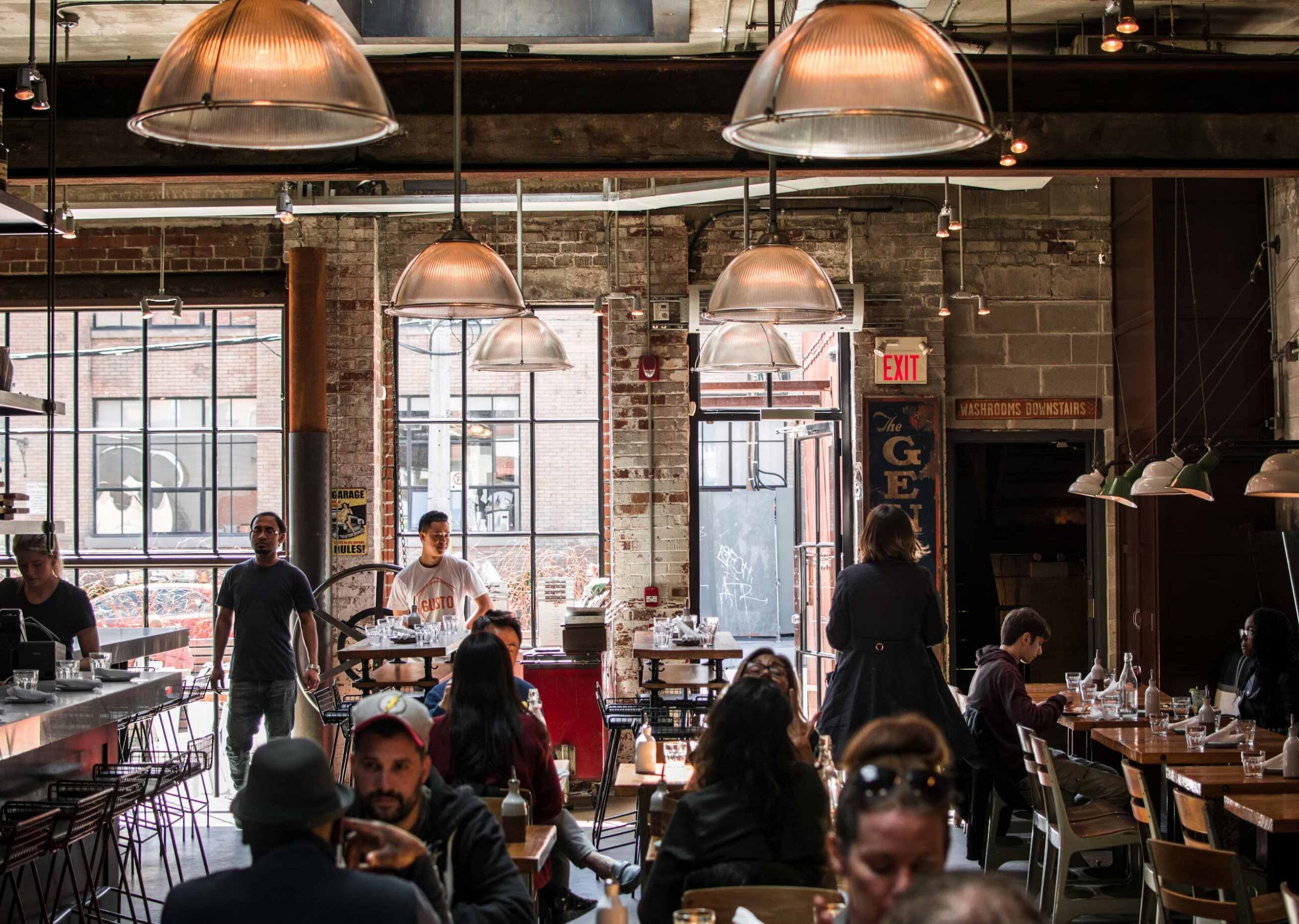The 2024 restaurant industry reached record-high sales for the second year. Still, despite sales exceeding $1.1 trillion, restaurant owners and management teams faced a more competitive landscape than ever. The past twelve months brought its share of challenges, prompting innovative adaptations that could shape the future of dining. We examined the obstacles faced in 2024 and the current competitive environment and predicted how savvy operators will win their category in 2025.
Intensifying Competition
If you thought the last few years following the pandemic were challenging, 45% of restaurant operators report that industry competition is fiercer than ever. The market is flooded with new concepts and dining formats, making it crucial for established restaurants to stand out. It’s no longer just about serving great food; it’s about creating a memorable experience that keeps customers returning.
Restaurants compete for a slice of consumers’ limited expendable income, going up against Netflix nights and home-cooked dinners. Savvy owners are leveraging everything from atmospheric dining rooms to innovative loyalty programs, recognizing that consumer groups like millennials would rather splurge on an experience than a tangible item.
Less expendable income could be the driving force behind the decline in the casual sector’s lunch tickets. Budget-conscious consumers bring their lunch to save money or skip lunch breaks to get more hours in. An early November poll revealed that 81% of adults would eat out more if they could afford it, and 76% said they’d visit quick-serve establishments if they had the funds.
The good news is economists expect to see lower interest rates in 2025, which should free up cash for consumers to enjoy lunch and dinners out in the new year. And sales show that consumers are still committed to restaurant dining.

Rising Costs: A Major Concern
Labor Costs
Remember when your biggest worry was whether the waiter could tell a Merlot from a Malbec? Those were the days.
Now, most operators are sweating over labor costs more than a line cook on a Saturday night. Between rising labor costs and fewer candidates entering the industry, operators feel pressure to implement creative solutions to attract talent while managing costs effectively.
Fine dining, which demands high skill and professionalism, struggled to attract and retain talent. A McKinsey study revealed that 42% of restaurants in major cities operated with reduced staff in 2024, and fine dining venues were hit hardest due to their specialized roles.
To combat this, many restaurateurs increased wages and benefits. Many also leaned heavily on technology to enhance the experience and create efficiencies. With AI-powered reservation systems, automated back-of-house operations, and robotic kitchen assistants, managers were able to deliver impactful improvements to both the customer experience and answer to staffing shortages. However, the human touch—integral to the fine dining experience especially—remained irreplaceable, prompting the need for more robust training programs to elevate service quality despite the shortages.
As an additional aid to staffing concerns, analysts are projecting an influx of young workers into the labor market over the next 12-18 months, giving hope to operators looking to increase staffing levels.
Food Costs
Late 2023 predictions thought this year would give us a breather from cost increases to foster significant growth. Well, 2024 said, “Hold my spatula!”
While moderating in the later part of 2024 compared to previous years, inflation rates still posed a challenge for operators, especially in the fine dining sector. According to a report by the National Restaurant Association, food costs rose by an average of 6.8% in 2024, a staggering 35% over February 2020. Fine dining and establishments that craft small-batch dishes rely on high-quality, often scarce ingredients, serving up even larger increases.
Rising costs of premium ingredients— imported items like truffles, seafood, and specialty wines—added strain. But even the most basic ingredients, such as eggs an fresh produce, had enormously impactful increases forcing operators in all sectors to assess menu prices.
Operators cite increased costs as a significant challenge. From supply chain disruptions to inflationary pressures, keeping menu prices reasonable while maintaining quality is a delicate balancing act. Instead of increasing prices, many restaurant general managers had to reevaluate their sourcing strategies and alter menu offerings to mitigate these rising costs.

Innovative Adaptations
Technology: The new secret ingredient
In response to these challenges, operators sprinkle tech solutions into every aspect of their business, from marketing to inventory. Advanced point-of-sale systems, inventory management software, and labor management tools are becoming integral to streamlining operations. This shift not only helps reduce costs but also enhances the customer experience.
Reservation systems give customers control over their dining time and seating.
CRM keeps customer preferences and dietary needs
POS/Ordering systems – easy customization, increases accuracy
Creating an interactive experience, such as a virtual wine sommelier to offer suggestions and education on pairings and tasting notes
Restaurants that implement tech tools to enhance the dining experience will stand out against their competition in the coming months. These applications can even fill employment gaps—reservations systems, automated back-of-house operations, and robotic kitchen assistants are on the way to becoming commonplace. However, the human touch—so integral to the fine dining experience—remains irreplaceable with technology, prompting innovative training programs to elevate service quality despite staff shortages.
Sustainability Is More Than a Trend
Restaurant sustainability has moved beyond composting and hydroponic lettuce. Operators implement strategies like nose-to-tail cooking (using all available meat cuts) and fermenting produce scraps to reduce waste and supply costs. Plant-forward menus encourage reductions in agricultural emissions, local sourcing creates a connection to and supports the local economy, and menus designed around in-season foods to reduce the carbon footprint are the practices being adopted by restaurants that are conscious of their environment and the bottom line.
A Glimmer of Optimism
Despite the challenges, there is reason for optimism. Economists again predict that the restaurant industry will see sales in the trillions of dollars for the third year. Additionally, employment in the sector is expected to increase by 200,000 jobs, giving relief to the staffing strain felt in the industry for nearly half a decade.
Other notable trends like sustainability and Insta-ready food presentation are holding strong. Even the fast-casual industry can capitalize on these trends by highlighting sustainable ingredients and packaging and building social campaigns around mouth-watering images.
Actionable Takeaways for Restaurateurs for 2025 Success
Prioritize Sustainability: Highlight sourcing and environmental consciousness.
Invest in Technology: Leverage technology and automation to enhance efficiency and personalize guest experiences.
Focus on Experience: Create immersive, storytelling-driven dining journeys to stand out in a competitive market.
Adapt Labor Strategies: Offer competitive wages, benefits, and innovative training to attract and retain skilled staff.
Embrace Flexibility: Explore hybrid dining models, such as dessert pop-ups or flexible take-out options to expand into emerging markets and mitigate risk.

Conclusion: Preparing for the Future
As we move into 2025, adaptability will be key in ensuring long-term success in our ever-evolving industry. The organizations that will come out on top will embrace technology, redesign their menus, and focus on the customer experience.
Cheers to a successful close to 2024 and an even brighter future!
Read more























